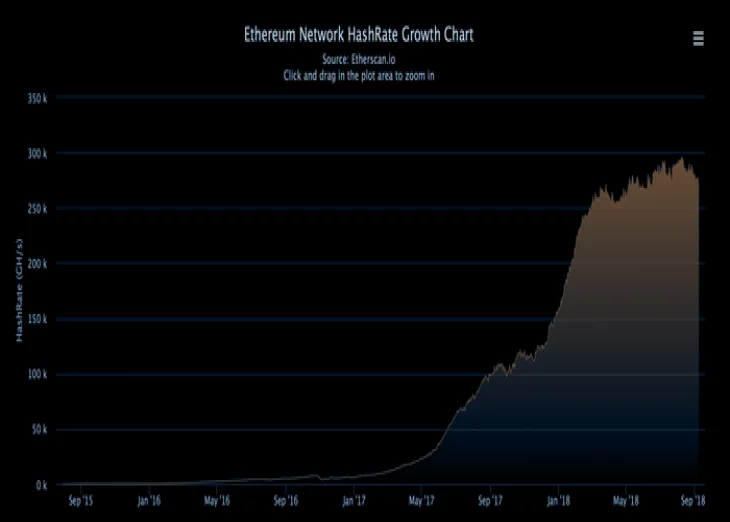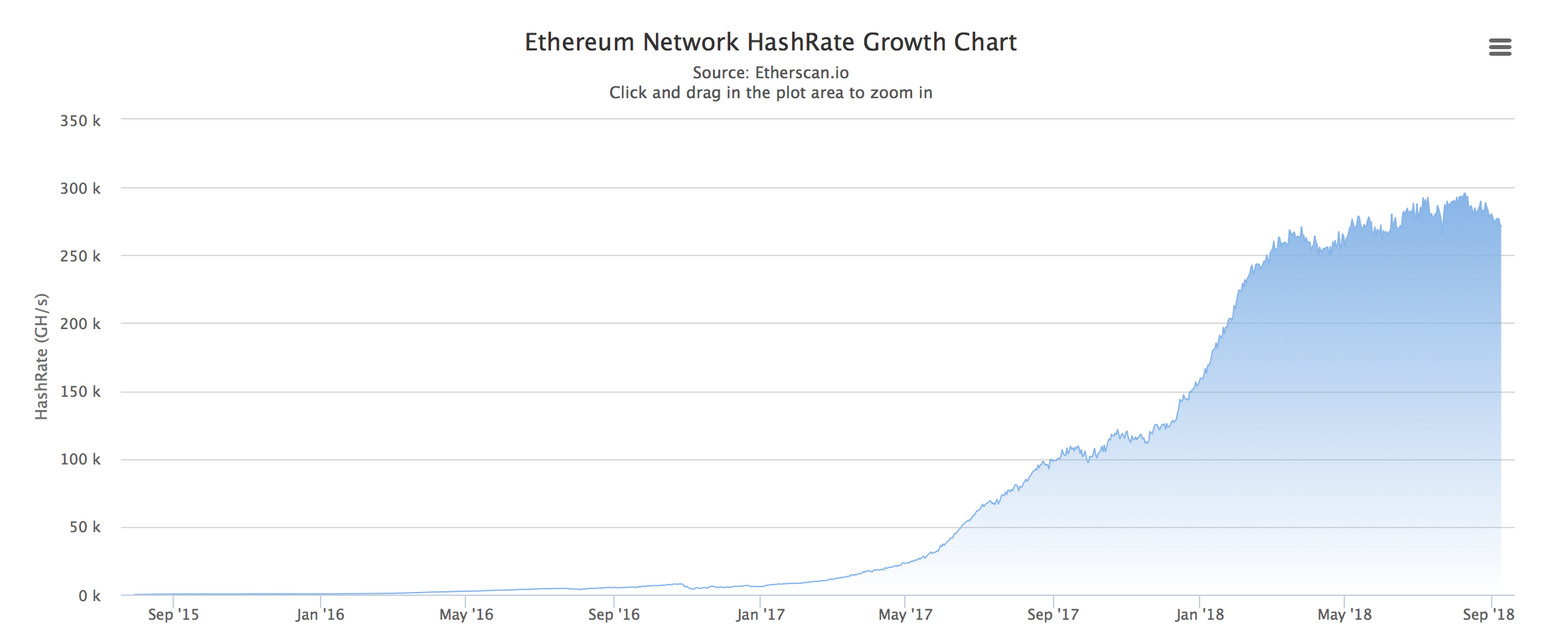Ethereum Mining Now Close to Unprofitable

Ethereum’s hashrate has fallen recently after a continuous period of up and up until August when it turned downwards from 300 trillion hashes a second to 270.
That’s one of the biggest fall in hashrate. Although it has seen previous falls, like in April when it dropped by 20 terahashes, or in July, but a 30 tera drop may be a first.
That’s after a period of relative stability since March. Although it has risen up to August, but at a minuscule rate compared to previously.

That recent drop may be due to simple variance or because ethereum mining is now close to being unprofitable, if it is not unprofitable already.
An ethereum miner said late last month that it costs $152 in electricity bills to mine one eth. That’s just $30 above ethereum’s recent low of $185 today, with the cost of $152 being just for electricity.
In addition, hardware is a substantial cost. As is cooling equipment because miners usually produce far too much heat, thus need to be cooled down to not melt.
For hobby miners there might not be any further costs, but for industrial miners where most of the mining is undertaken, there would also be storage costs for the thousands of GPUs. How much that is either in rent or as upfront purchasing of land is unclear.
Then, of course, you have labor costs as someone or some people have to maintain the hardware and look after the operations. All of which means some ethereum miners are probably bankrupt or on the brink of bankruptcy.
We’ve seen this before with bitcoin in 2014-15. The network, of course, keeps working fine. It self adjusts. The more miners leave, the easier it becomes to mine one eth, thus the more profitable.
For individual miners, however, it is here where the smart are separated from amateurs who did not plan properly. That’s because to undertake mining at an industrial level as many do, then one has to undertake risk management.
In the simplest terms that means when the sun is shining miners should put aside, daily, weekly, or monthly, some of the eth they mine, or its fiat equivalent if they have converted it, and keep it as a savings fund of sorts for rainy days.
Thus if or when price turns to reach cost levels, miners should withhold any sell pressure and instead rely on the rainy day fund. Otherwise, if they continue selling then they’re basically shooting themselves in the foot because they’re increasing their own mining costs by decreasing price.
Logically, without any coordination, this should self-adjust or self-organize as the miners who are not careful open bankruptcy proceedings, thus withhold their own sell-pressure, with other miners either facing the same fate or becoming smarter and quickly so.
A decision many of them are now facing as ethereum tries to find a floor during one of the most brutal bear market seen so far.
Copyrights Trustnodes.com














Article comments